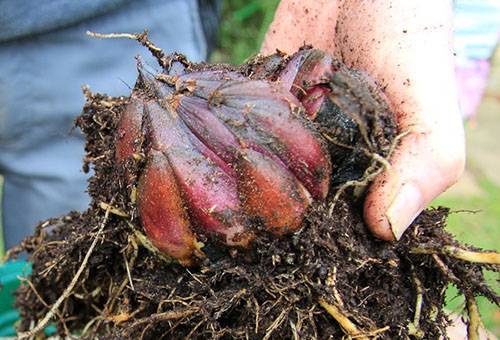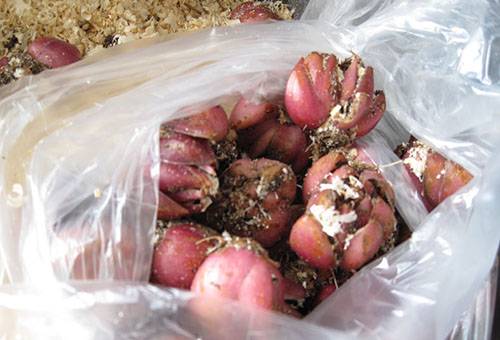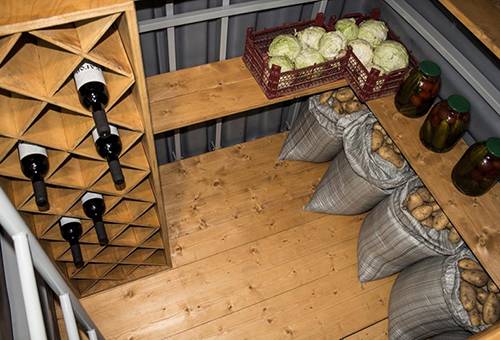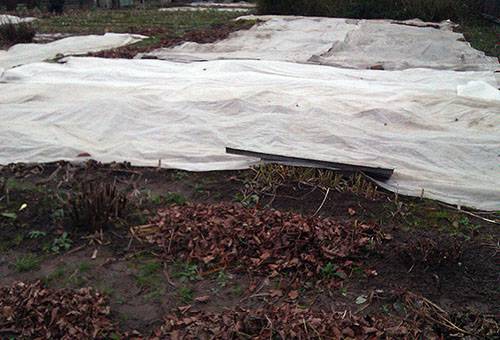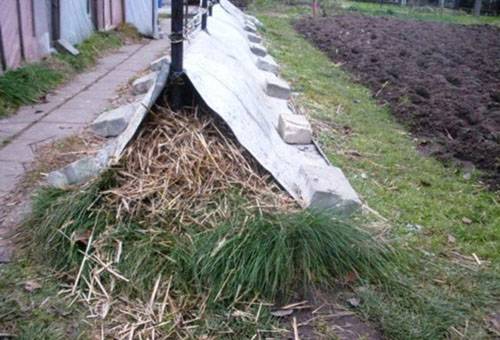Winter storage of lilies at home
Content:
Florists know many ways of winter storage of lily bulbs. But all of them must meet certain storage conditions even at home and strictly withstand them. This applies primarily to the temperature regime: excess heat will provoke premature plant growth, and its lack can lead to the death of bulbs.
Storage preparation
The first frosts are a signal for digging out bulbs of lilies in order to store them in the winter. When proceeding with this operation, remove the dried leaves at a height of approximately 7 cm from the ground. Next, dig a hole wider so as not to damage the bulb and touch the roots with a shovel, and carefully remove it. After cleaning from the ground, rinse in cool water and put on a drying tray, spreading the onions so that they do not fit tightly against each other. You can fill the gaps between them with dry moss or vermiculite. Do not forget to carefully examine the bulbs and discard those affected by rot or disease. If you place the pallet in a cool, dark place (shed or garage), they will dry out within a few days. In a heated room there is a chance of mold.
Are the bulbs dried out? Now it’s nice to sprinkle them with fungicidal powder, place them in paper bags (another option is to wrap each newspaper tightly in several layers), lay with absorbent material (moss, for example.) Then load it into a cardboard box with the made ventilation holes. And you can send it to the storage: to the balcony, to the basement, to the garage.
Storage methods
- If you are going to store the bulbs in a plastic bag, which is also practiced, first prepare the bag by making small ventilation holes in it. The bottom of the bag is covered with peat about 10 cm, then the lily bulbs are laid, the layers of which are also separated by peat 12–13 cm thick. We tightly tie the bag and put it in a suitable container or storage box in winter.
- It is sometimes recommended to store bulbs at home in planting peat pots, which make up in a suitable container - a box, a cardboard box - and transfer them to the store. Of course, this is a very convenient way, since in the same pots they are planted in the open ground in spring. A couple of weeks before planting, they can be brought to light and start watering.
- It happens that the bulbs threw sprouts ahead of time if storage conditions were not met. If it is too early to plant in the soil, you will have to plant sprouted lilies in pots and put them in a cool and sufficiently lit place.
Affordable Storage
But still, the place where to store planting material is crucial. The main condition is maintaining a stable temperature regime. Of course, you can adjust your regular home refrigerator to maintain a constant temperature (from 0 to +3 degrees) throughout the winter. However, bulbs are unlikely to receive adequate ventilation in this case. In addition, the ethylene stored in the refrigerator, vegetables and fruits will create a not very favorable atmosphere for lilies. We'll have to keep an eye on their condition and, perhaps, until spring, the supply of bulbs may be reduced.
Not everyone can boast of having a storage in the basement or in the cellar, where it is easier to follow the required regime and achieve the necessary air movement and low humidity. But here, control is also necessary in the event of a sharp decrease in the external temperature.By closing and opening ventilation openings as needed, a constant temperature can be maintained.
Tip
During the winter, check the condition of the bulbs in one to two months. Remove the emerging mold with a dry soft cloth, sprinkle the affected area with charcoal powder. The rotten places must be cut with a knife with a blade treated with a disinfecting solution, and the cut should be treated with brilliant green. You can bathe them in a solution of potassium permanganate or in the fungicidal liquid "Maxim". And, of course, the affected bulbs must be kept separate from the remaining planting material. If the bulbs begin to dry, wrap them in moist paper or moisten the filler in which they are stored (peat, moss).
Leave the plants in the ground
Many experts believe that lilies can be stored in winter directly in the ground, where they grew. A good snow cover of at least 10–15 cm will be sufficient, and in the case of a snowless winter, shelter with peat, spruce spruce, coniferous or leafy litter. Coniferous is preferable, since it will not become a refuge for pests, which in the spring will start to feed onions. Shelter is removed in the spring, when the soil begins to thaw, and this must be done before sprouts appear. Of course, this can only be done with frost-resistant varieties of lilies. Another subtlety: if Eastern hybrids and OT hybrids winter in the ground, then they must go under the snow in dry land. Therefore, already in the first week of September, the bulbs are covered with polyethylene and removed only when the soil freezes and snow begins to fall. Then the lilies are sheltered by known methods.
Build a “house” for bulbs in the ground
It is better to store oriental hybrids or other new hybrid varieties differently, although it is also possible in the open ground. A small trench should be dug, deliberately choosing a place for it on its site: the most snowy in winter and the driest in spring. It is important that melt water does not stagnate at the bottom of the trench, so it is better to try to provide good drainage and protection from moisture from above. Strengthen the walls of the trench with boards, prepare the cover. Pour bags of water along with pre-packaged onions - they will stabilize temperature differences and, in addition, serve as indicators: if the water in them turned into ice, then the onions freeze. And so that the cover can be removed in winter, place a plastic film under it so that it does not freeze. Thermal insulation is also necessary - let it be at least layers of cardboard sprinkled with peat. Cover the lid with lapnik or litter - now you can tell yourself that you have prepared your bulbs for spring awakening.
The growth and flowering of plants will depend on how you stored the planting material. Create optimal conditions for them and they will reward your work.
Read the article on how to care for alocasia
